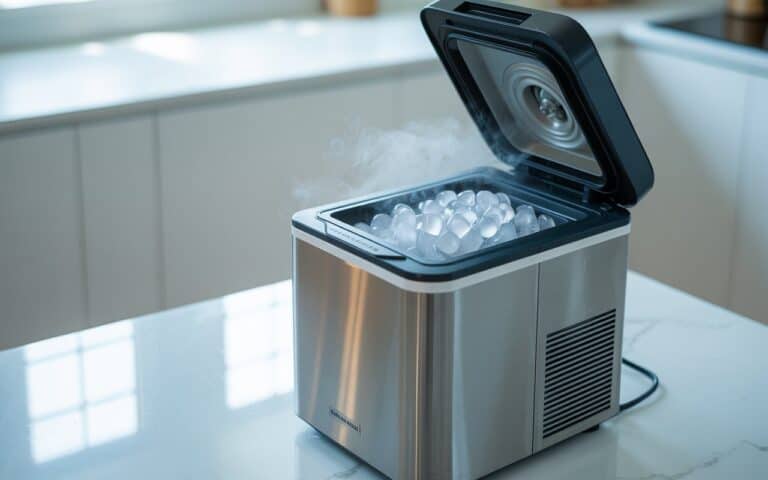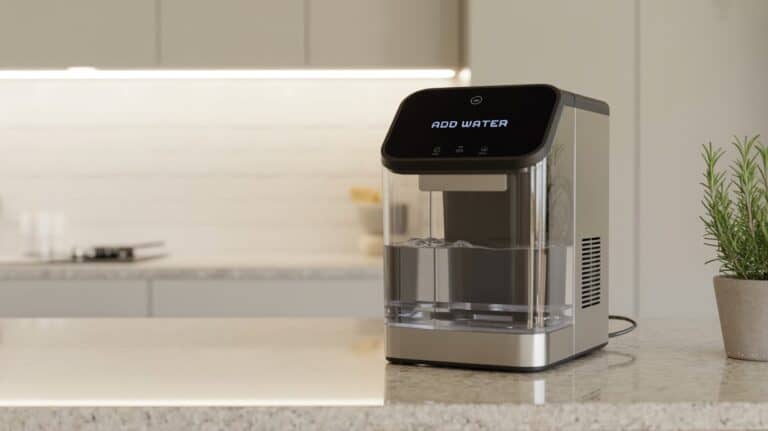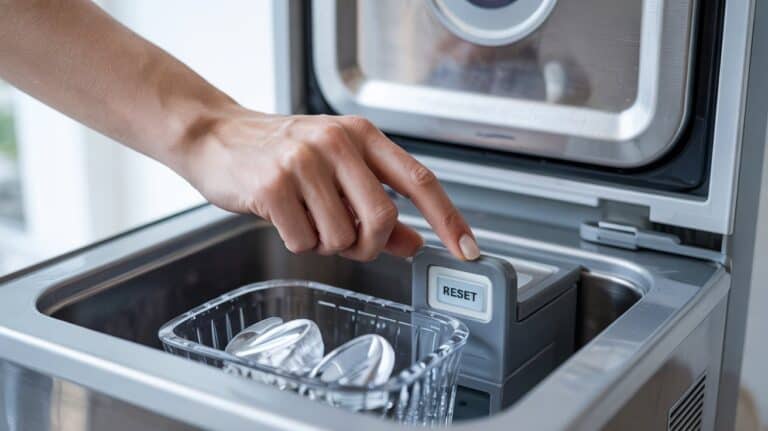Why Is My Ice Maker Not Making Ice? (Easy Fixes Explained)

Your ice maker’s running. The lights are on. But the ice? Nowhere to be found.
That silent tray, that empty bin — it’s frustrating, especially when you need a cold drink and your machine just… sits there.
Don’t worry — this is one of the most common (and often fixable) issues with ice makers.
In this guide, I’ll walk you through the most likely reasons why your ice maker isn’t making ice — and show you exactly what to check based on how your machine is behaving.
Whether it’s completely dead, making noise but no ice, or just painfully slow — you’ll find the right fix below.
Let’s get started.
1- Ice Maker Is Completely Dead (No Light, No Sound)?
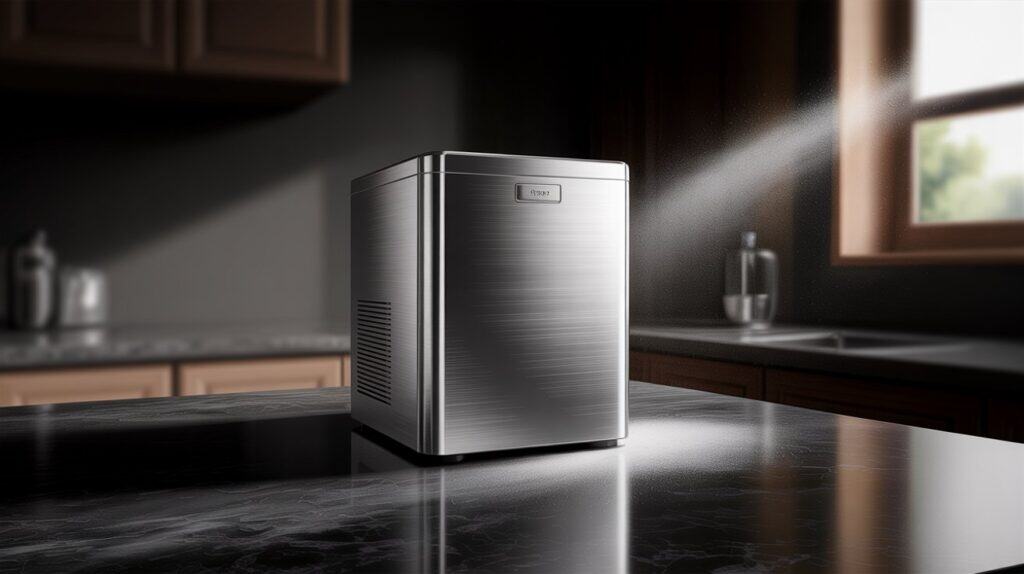
Power issue or tripped breaker
If your ice maker isn’t showing any signs of life — no lights, no hum, no click — the problem might be as simple as a power issue.
Start by checking the power cord. Is it fully plugged into the outlet? Try unplugging it and plugging it back in firmly. Then test the outlet itself by plugging in a phone charger, lamp, or any small device. If the outlet is dead, check your home’s breaker panel — the circuit may have tripped without you noticing.
Sometimes, all it takes is a simple reset to bring the unit back to life.
Internal fuse or faulty control board
If your ice maker still shows no signs of life — even after testing the outlet and power cord — the issue might be internal. Some units have a built-in fuse or a small control board that can fail silently.
Unfortunately, there’s no easy way to test a control board without opening the unit or using special tools. But you can try a soft reset first.
Unplug the machine, leave it off for at least 10 minutes, then plug it back in.
This simple reset has helped many users bring “dead” machines back to life, especially if the problem was caused by a power surge or software hiccup.
If you’re not sure how to reset your model, here’s a full guide to resetting your ice maker.
2- Lights Are On, But It’s Not Making Ice?
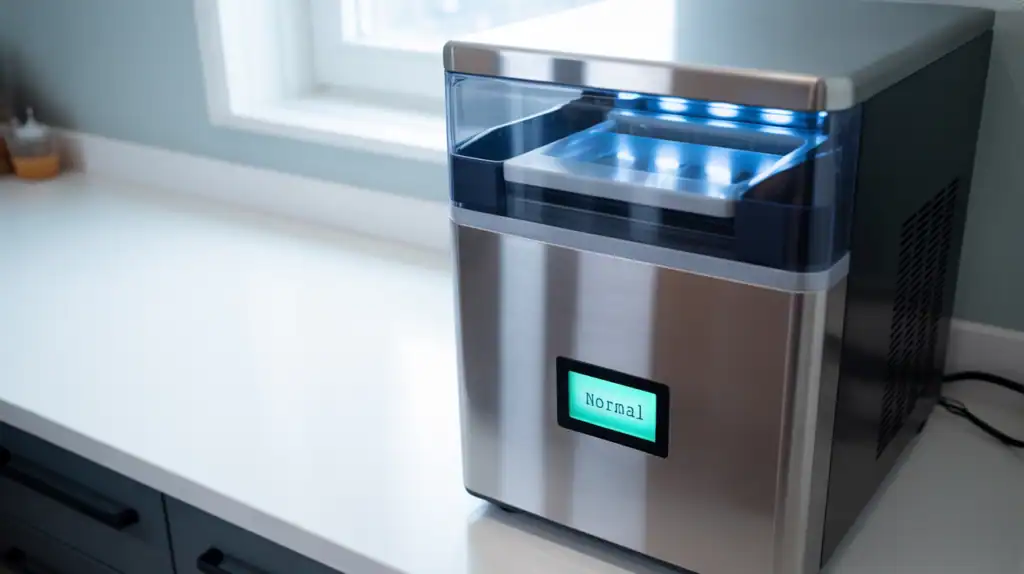
Water line is disconnected or kinked
If your ice maker lights are on but nothing’s happening, the first thing to check is water flow. No water = no ice, no matter how well the machine powers up.
Look behind the unit and inspect the water line. Is it connected securely? Is it kinked or bent? You’d be surprised how often the hose gets pinched between the machine and the wall — especially after moving or cleaning.
Gently pull the unit forward and straighten out the line. If possible, run a quick water test to make sure the flow is strong and uninterrupted.
Clogged or overdue water filter
If your ice maker is powered on but not making any ice, an old or dirty water filter could be the problem. Over time, filters collect minerals and debris from the water — and once they’re clogged, the machine can’t get enough flow to fill the tray.
Note:
Many ice makers stop working entirely when the filter is clogged — even if the tank is full and everything looks fine. If you haven’t replaced it in the past 6 months, it’s a good place to start.
If your filter hasn’t been cleaned in a while, it may be causing the issue. Here’s how to clean it properly.
Ice tray not filling properly
Sometimes the machine powers on, hums like it’s working… but the ice tray stays dry. This could mean water is getting blocked before it even reaches the mold.
Start by checking the fill tube — the small line that brings water into the tray. If it’s frozen or partially clogged, the tray won’t fill. A hairdryer on a low setting can help thaw it gently (just unplug the machine first).
Next, inspect the water inlet valve. If it’s weak or partially stuck, it might not deliver enough water pressure to start the ice-making cycle.
Also, take a moment to look at the tray itself. If it’s cracked or out of alignment, water might leak or miss its mark entirely.
If your machine keeps showing weird alerts, this Add Water error guide might help.
3- Ice Maker Is Running, But Not Freezing Water?
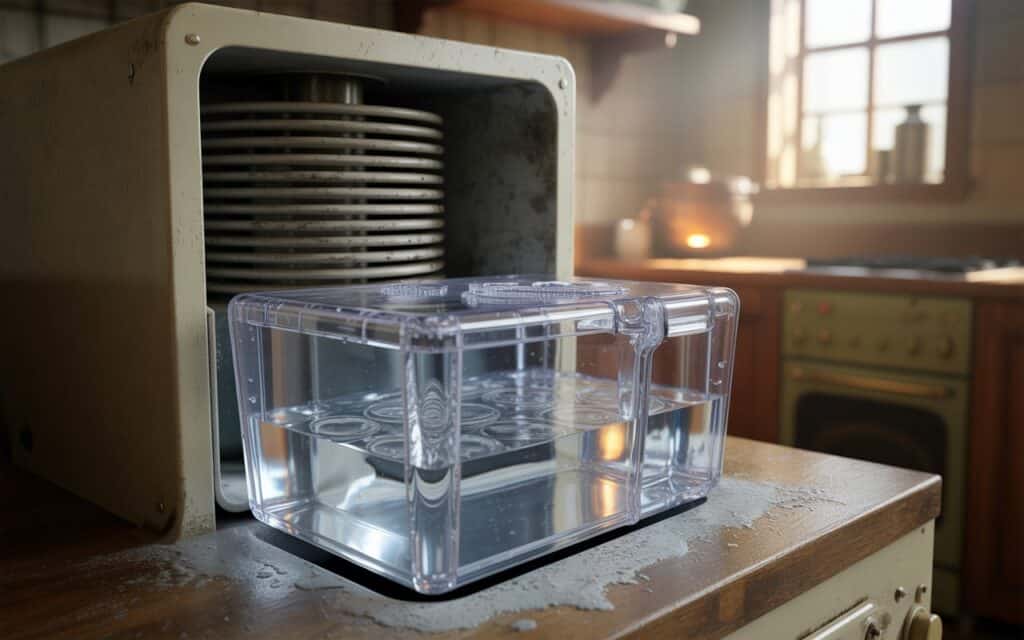
Cooling system issue or dirty coils
So your machine is humming, fans are spinning, maybe even water is in the tray — but the ice never forms. That usually points to a cooling issue.
Start by checking the airflow around the machine. If the back coils are dusty or clogged, the compressor has to work harder — and may not be cooling enough to freeze the water. Use a soft brush or vacuum to clean them gently.
In some cases, the compressor itself could be weakening or cycling off too early. That’s harder to test
Room is too warm or ventilation is blocked
If your ice maker is sitting near a heat source — like a stove, oven, or sunny window — it may struggle to freeze water properly. Ice makers need good airflow and cool surroundings to do their job.
Also, avoid enclosing the unit in tight spaces like small cabinets. Trapped heat makes it work harder and may prevent proper cooling.
Unit is tilted or placed unevenly
Most portable ice makers need to sit perfectly flat to work properly. If the unit is tilted — even slightly — it can mess with the water sensor, confuse the internal cycle, or cause poor airflow around the coils.
Use a spirit level app on your phone or a simple bubble level to check. If one side is higher, adjust the unit’s feet or place something flat underneath to balance it out.
4- Ice Maker Works, But It’s Way Too Slow?
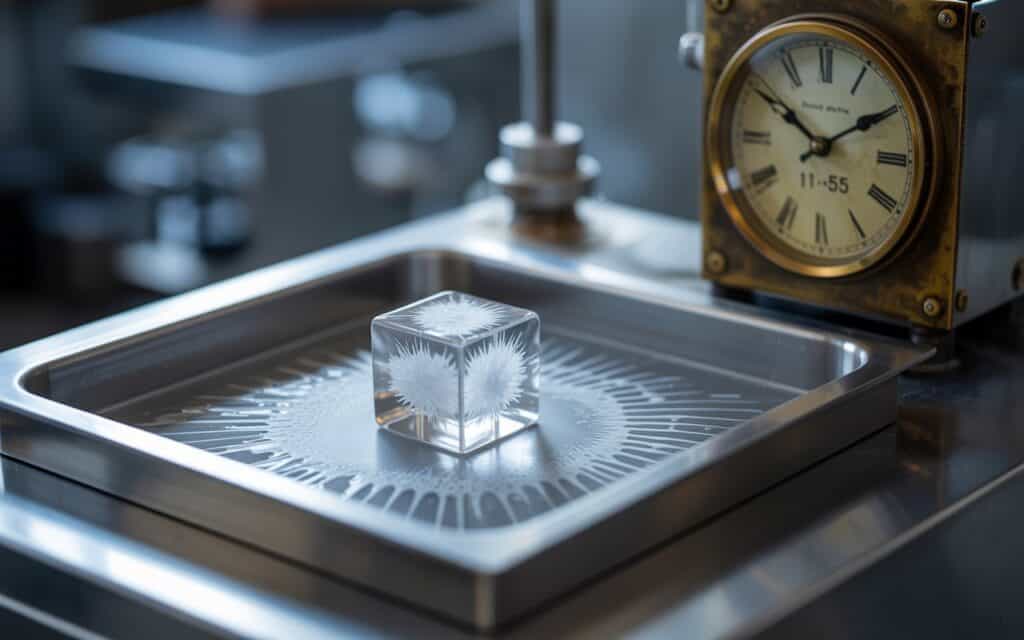
Freezer temperature is too high
If your ice maker is producing ice — but taking forever to do it — the problem might be temperature-related.
For ice to form properly, the internal temp needs to be at or below 0°C (32°F). Anything warmer will slow down the freezing cycle significantly. Check your machine’s settings if available, or test the freezer section if it shares space with a fridge.
Also, don’t forget to consider the room temperature. A hot kitchen or enclosed space can raise the internal temp even if the machine is set correctly.
Low water pressure or poor flow
Even if everything else seems fine, weak water flow can slow down the entire ice-making process.
Try connecting the unit to a different water source if possible — one with better pressure. Also, inspect the water inlet for any buildup or partial clogs. A little debris in the wrong spot can easily restrict the flow just enough to delay the cycle.
You don’t need tools for this — just a flashlight, a clean cloth, and a few extra minutes.
Wrong setting or delayed mode
Some ice makers come with settings that delay the first ice cycle — especially after startup or cleaning. If your unit seems to be doing “nothing” for a while, it might just be in a delayed mode without showing a clear message.
Double-check the settings or timer functions if your machine has a display. If not, try unplugging it for a few minutes and restarting it manually. This simple reset often helps “wake up” the machine and get it back on track.
If you’re not sure you’re using your machine the right way, check this full usage guide for step-by-step setup help.
Still Not Making Ice? Here’s What to Do

Internal damage (sensor, fan, control board)
If you’ve tried every fix and your machine still won’t respond or make ice, there might be a deeper issue inside — like a faulty sensor, fan, or control board.
These parts can fail over time, especially in older or heavily used units. And unlike filters or hoses, they’re not easy to check without tools or teardown experience.
If your machine is still under warranty, don’t open it. Doing so may void your coverage or cause more damage.
Contact support or consider replacement
If the issue keeps coming back — or your ice maker is more frustrating than functional — it might be time to reach out to the manufacturer’s support.
They can guide you through advanced troubleshooting, offer repairs, or confirm if it’s time for a replacement.
And if your unit is older and out of warranty, it might be smarter (and cheaper) to upgrade to a more reliable model instead of chasing repairs.
If your ice maker keeps failing despite basic fixes, it might be due to using the wrong machine for your needs — especially if it’s not suited for your environment. That’s why understanding the different types of ice makers and how each one works can save you a lot of future frustration.
Final Thoughts
A silent ice maker doesn’t always mean a broken one.
Most of the time, it’s a small issue — a dirty filter, a tilted unit, or a setting you didn’t realize was on.
Use the signs and behavior of your machine to guide your fixes.
Take it step by step, and in most cases, you’ll have your ice back without tools, tech support, or frustration.
And if none of it worked? Don’t sweat it — you’ve ruled out the basics, and now you know exactly what to ask for if you call support or decide to replace the unit.
Frequently Asked Questions (FAQ)
Why is my ice maker not making cubes even when it’s on?
This usually means the water isn’t reaching the tray — even if the lights are on.
Common causes include a clogged water filter, a frozen fill tube, or a misaligned water tank.
Start with a full clean and filter check before moving to deeper issues.
My ice maker stopped working suddenly — what should I check?
Check power first: make sure it’s plugged in and the outlet works.
Then inspect the water source, look for kinks or clogs in the hose, and try a soft reset by unplugging the machine for 5–10 minutes.
Sudden shutdowns are often electrical or sensor-related.
Should I reset my ice maker before calling for service?
Yes — always try a manual reset first.
It’s one of the easiest ways to clear sensor misreadings or minor glitches.
You can unplug the unit for a few minutes, or follow your model’s reset process.
It may save you a phone call.



